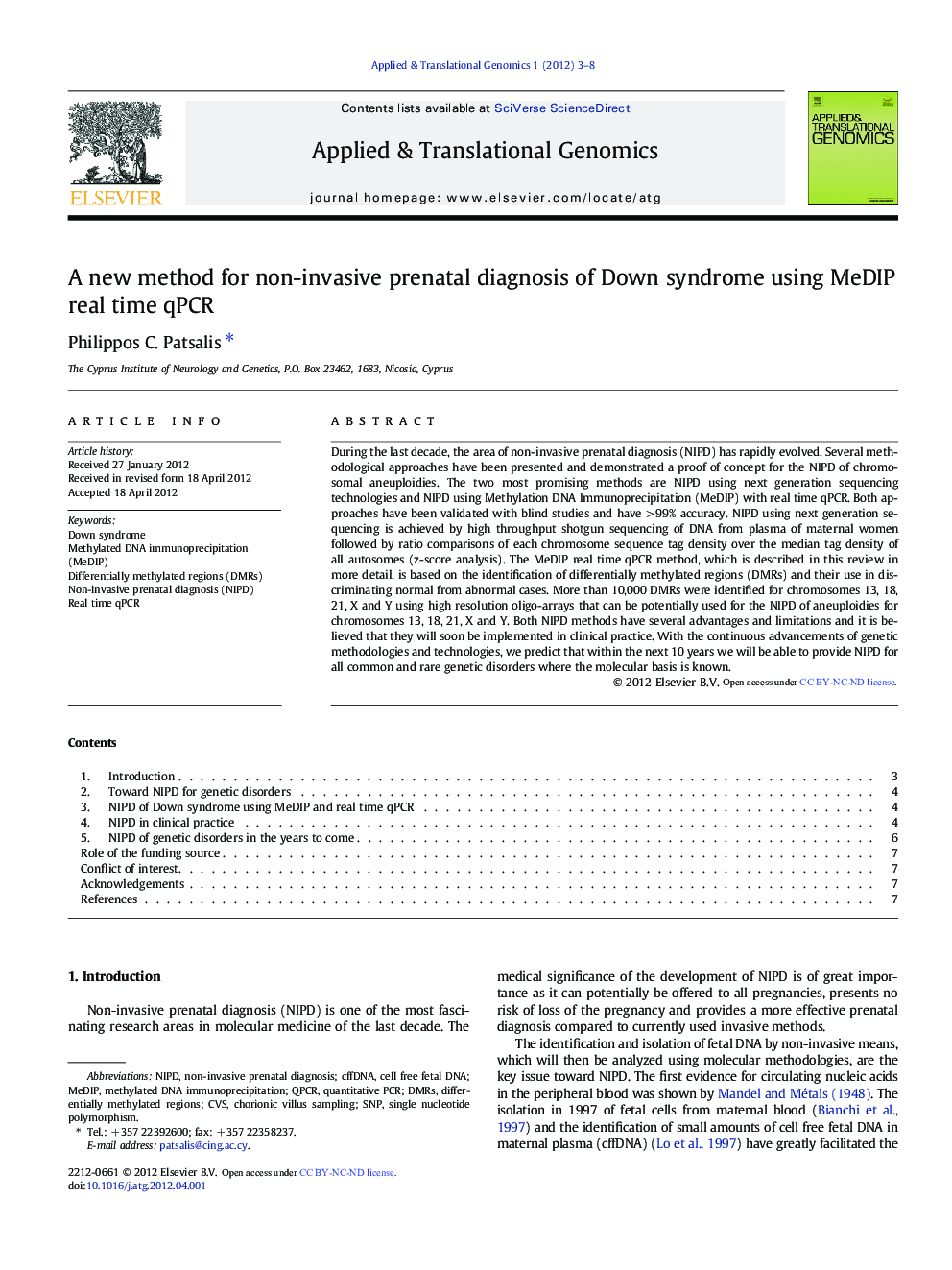| Article ID | Journal | Published Year | Pages | File Type |
|---|---|---|---|---|
| 2773010 | Applied & Translational Genomics | 2012 | 6 Pages |
During the last decade, the area of non-invasive prenatal diagnosis (NIPD) has rapidly evolved. Several methodological approaches have been presented and demonstrated a proof of concept for the NIPD of chromosomal aneuploidies. The two most promising methods are NIPD using next generation sequencing technologies and NIPD using Methylation DNA Immunoprecipitation (MeDIP) with real time qPCR. Both approaches have been validated with blind studies and have > 99% accuracy. NIPD using next generation sequencing is achieved by high throughput shotgun sequencing of DNA from plasma of maternal women followed by ratio comparisons of each chromosome sequence tag density over the median tag density of all autosomes (z-score analysis). The MeDIP real time qPCR method, which is described in this review in more detail, is based on the identification of differentially methylated regions (DMRs) and their use in discriminating normal from abnormal cases. More than 10,000 DMRs were identified for chromosomes 13, 18, 21, X and Y using high resolution oligo-arrays that can be potentially used for the NIPD of aneuploidies for chromosomes 13, 18, 21, X and Y. Both NIPD methods have several advantages and limitations and it is believed that they will soon be implemented in clinical practice. With the continuous advancements of genetic methodologies and technologies, we predict that within the next 10 years we will be able to provide NIPD for all common and rare genetic disorders where the molecular basis is known.
► Next generation sequencing and MeDIP real time qPCR achieved NIPD for Down syndrome.► The MeDIP real time qPCR approach is accurate, fast, simple and cost effective. ► We speculate that within 10 years NIPD will expand to other genetic diseases.
